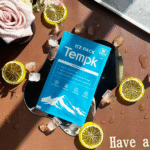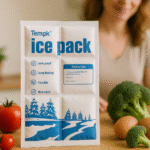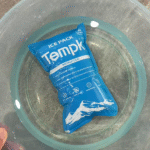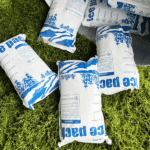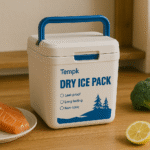Comment emballer la viande dans une glacière avec de la glace carbonique (2025)
Mis à jour: Août 27, 2025. Si vous avez besoin de résultats congelés garantis, here’s how to pack meat in a cooler with dry ice—safely, étape par étape, et dimensionné pour 24 à 72 heures. Conserver les aliments ≤40°F (congelé à ≤0°F), vent CO₂, et utilisez des blocs enveloppés sur une barrière pour que le froid tombe comme une « douche de neige » sur votre viande.
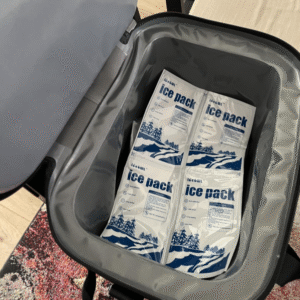
What you’ll learn about how to pack meat in a cooler with dry ice
-
Pro layouts that actually work for hunts, voyages en voiture, et la restauration (haut, bas, deux zones).
-
De combien de glace sèche dont vous avez vraiment besoin, par taille plus froide, durée, et charge thermique.
-
Règles des compagnies aériennes et des transports maritimes auxquelles vous ne manquerez pas, y compris la limite de passagers de 2,5 kg.
-
Compatibilité et sécurité du refroidisseur, donc les joints, doublures, et les gens restent en sécurité.
-
Un outil de dimensionnement en 30 secondes + autocontrôle to reduce guesswork on every trip.
Comment emballer la viande dans une glacière avec de la neige carbonique: safety first
Use wrapped blocks above the load, Ajouter une barrière, emballage, and vent the cooler—this is the safest, most reliable method. Keep food ≤40°F and frozen items ≤0°F; Ne jamais sceller hermétique; handle at −109°F with insulated gloves. These steps minimize thaw risk and prevent CO₂ pressure issues.
Plain‑English why it works: puits de froid. A top layer “rain‑cools” your meat while a corrugated or rack barrier protects the liner from freeze burn. Tight stacking removes warm air pockets that “eat” dry ice. Leave a small vent path so gas escapes—no swollen lids, Pas de surprise.
Comment emballer la viande dans une glacière avec de la neige carbonique: SOP étape par étape
Copy this workflow and you’ll get repeatable, frozen outcomes.
-
Confirmer la compatibilité. Use a rotomolded hard cooler approved for dry ice; most soft coolers are not.
-
Préchauffeur the empty cooler and the meat. Hours spent now are hours saved later.
-
Planifier l'aération. Jamais hermétique; crack the drain or lid slightly per brand guidance.
-
Protection contre l'usure. Insulated gloves and eye protection for −109°F handling.
-
Add a barrier. Carton, a factory basket, or a wire rack.
-
Load meat. Scellé sous vide, étiqueté, stacked tight with minimal air.
-
Placer de la glace carbonique. For long hold: barrier → wrapped blocks en haut; for frequent access, use a bottom‑pack layout.
-
Combler les lacunes. Towels, frozen bottles, or pellets to remove air pockets.
-
Fermer & ombre. Keep out of direct sun; limit openings.
-
Surveiller les températures. Verify on arrival; en cas de doute, jette-le.
Vraie cas: A pre‑chilled 65‑qt hard cooler with ~35 lb wrapped blocks over ~30 lb venison stayed ≤10°F for 44 h at 90–94°F ambient, with brief lid openings—field‑proven, hot‑weather performance.
Dry ice on top or bottom—what’s best?
Top‑pack wins for longest hold; bottom‑pack trades duration for access.
-
Pack supérieur: meat → barrier → wrapped blocks → towels to fill gaps.
-
Pack inférieur: barrier → wrapped blocks → barrier → meat.
-
Two‑zone: divider with dry ice on one half; meat on the other; gel packs stabilize the “access” side.
| Choix de conditionnement | Quand utiliser | Expected hold | Ce que cela signifie pour vous |
|---|---|---|---|
| Pack supérieur | Longs voyages, minimal openings | Longest | “Cold waterfall” over cargo |
| Pack inférieur | Frequent access | Plus court | Easy grab, plan replenishment |
| Two‑zone | Cargaison mixte | Moyen | Quick access without warming the meat side |
How much dry ice for meat coolers?
Rule‑of‑thumb: plan 5–10 lb par 24h base loss; pour la viande, commencer 10–15 lb/day (25–35 pintes), 15–25 lb/day (45–65 pintes), 25–40 lb/day (75–110 pintes). Ajouter 25–40% in heat or frequent openings. Les blocs durent plus longtemps que les pastilles.
| Taille plus froide (QT) | Meat load (kg) | 24 H | 48 H | 72 H | Ce que cela signifie |
|---|---|---|---|---|---|
| 25–35 | 10–20 | 10–15 lb | 18–25 lb | 28–35 lb | Weekend for two |
| 45–65 | 20–40 | 15–25 lb | 25–40 livres | 38–55 lb | Family trip; +25% in heat |
| 75–110 | 40–70 | 25–40 livres | 40–65 lb | 60–90 lb | Hunt/fish haul |
| 120–150+ | 70–120 | 30–50 livres | 55–80 livres | 80–120 lb | Catering/large harvest |
Exemple: 65‑qt, 48 H, voiture chaude → ~40 kg. That’s how to pack meat in a cooler with dry ice without guessing.
How to pack meat in a cooler with dry ice for flights and shipping?
Oui, you can fly or ship—but follow the markings, limites de poids, et ventilation. NOUS. les passagers peuvent transporter jusqu'à 2.5 kg (5.5 kg) de glace carbonique par personne en ventilé packages with airline approval and «Dioxyde de glace sèche / carbone, solide" marking plus net weight or “2.5 kg or less.” For air cargo, marque UN1845 et masse nette; packaging must be vented. Pair dry ice with frozen gel packs for screening delays.
Comment emballer la viande dans une glacière avec de la neige carbonique: safety essentials
La ventilation n'est pas négociable. Co₂ déplace l'oxygène; never use airtight containers or unventilated spaces. Portez des gants isolés et une protection des yeux. Dispose by letting remaining ice sublimate in a ventilated area—never in sinks or sealed bins. Verify temps on arrival with a probe thermometer; ≤40°F for cold foods, ≤0°F for frozen.
Which coolers work best with dry ice?
Rotomolded hard coolers from major brands are typically compatible; most soft coolers are not. Follow model‑specific guidance, and crack the drain or lid slightly if the seal is very tight to avoid pressure. Use a barrier to protect liners and slow sublimation.
Practical tips that save trips
-
Pré-Chill tout. Dry ice should maintain, ne pas créer, your freeze.
-
Blocs + boulettes. Use blocks for base load; pellets to fill gaps.
-
Two coolers on long hauls. One “do‑not‑open” meat cooler; one for quick‑access items.
-
Shade and airflow. Tenir à l'abri du soleil; carry in ventilated vehicle areas.
Field tip: Pour les charges mixtes, run a deux zones mise en page: dry ice on one half, fillets or cuts on the other with gel packs. You’ll open the meat side more often without hammering your block life.
2025 trends shaping how to pack meat in a cooler with dry ice
Emballage réutilisable, Surveillance de l'IoT, Hybrides PCM, and CO₂ supply tailwinds are redefining frozen transport. Expect better‑priced connected loggers, standardized reusable inserts, and easier access to CO₂ thanks to carbon‑capture projects—useful during peak seasons.
Derniers développements en un coup d'œil
-
Reusable systems rise: Durable crates and inserts reduce waste and cost over time.
-
IoT everywhere: Add a logger and get alerts before a “silent thaw” happens.
-
PCM + dry ice hybrids: Smooth temperature swings and extend hold in mixed loads.
-
CO₂ network investment: Regional plants and CCS projects improve availability.
Perspicacité du marché: Cold‑chain packaging and monitoring show multi‑year growth into the 2030s. Planifier pour better gear at lower unit cost, not more Styrofoam.
FAQ: how to pack meat in a cooler with dry ice
How should I layer for longest hold?
Pack supérieur: meat at bottom, barrière, wrapped blocks on top—cold sinks for maximum hold.
How long will 10 lb last?
About 24 h in a decent hard cooler; ajouter 25 à 40 % pour la chaleur ou les ouvertures fréquentes.
Can I fly with meat and dry ice?
Oui. Up to 2.5 kg per passenger in a vented container labeled for dry ice, avec masse nette. Get airline approval.
La glace sèche endommagera-t-elle ma glacière?
Not if the model is rated and you use a barrier. Most soft coolers are not compatible.
Should I mix gel packs with dry ice?
Oui. Gel packs stabilize the meat zone during frequent openings or when blocks run low.
Stratégie de maillage interne (suggested)
-
Cold‑chain compliance checklist for small meat shippers — /blog/cold-chain-compliance-checklist
-
PCM VS. glace carbonique: best combo for meat shipments — /blog/pcm-vs-dry-ice
-
How to choose a temperature data logger for coolers — /blog/choose-temp-logger
-
Reusable insulated shippers ROI for butchers and farms — /blog/reusable-shippers-roi
-
Hunting trip packout: venison transport SOP — /blog/venison-transport-sop
Stimulateurs d'engagement
Autocontrôle interactif (Oui / Non):
-
Is your cooler rotomolded and dry‑ice rated?
-
Do you have ≥10 lb/day for a 45–65 qt cooler?
-
Did you pré-refroidissement both cooler and meat?
-
Le colis est-il vented and labeled for travel?
-
Do you carry a probe thermometer to verify ≤40°F on arrival?
Score: 5/5—you’re ready. 3–4/5 – revoir les SOP. ≤2/5—fix gaps before moving meat.
Résumé & recommandations
Big picture: À pack meat in a cooler with dry ice without guesswork, pré-refroidissement, emballage, use wrapped blocks over a barrier, vent the cooler, and size blocks with the 5–10 lb / jour règle (add 25–40% for heat and access). Follow airline/shipping markings and verify temps on arrival.
Étapes suivantes (CTA):
-
Copie this SOP for your next trip.
-
Run the estimator and buy blocks + a small bag of pellets.
-
Ajouter un enregistreur and a barrier kit to standardize outcomes.
Need a ready‑to‑print SOP? Talk to a Tempk cold‑chain specialist for a route‑tuned template.
À propos du tempk
We help teams move temperature‑sensitive meat and seafood sans risque, simplement, et en toute conformité. Nos expéditeurs réutilisables, Packs PCM, and connected data loggers deliver rock‑solid frozen outcomes with fewer repacks. Customers report fewer excursions and faster packouts with our standard kits. Want a ready‑to‑print SOP tailored to your routes? Contact Tempk and we’ll optimize your packout for season, durée, and load profile.
















